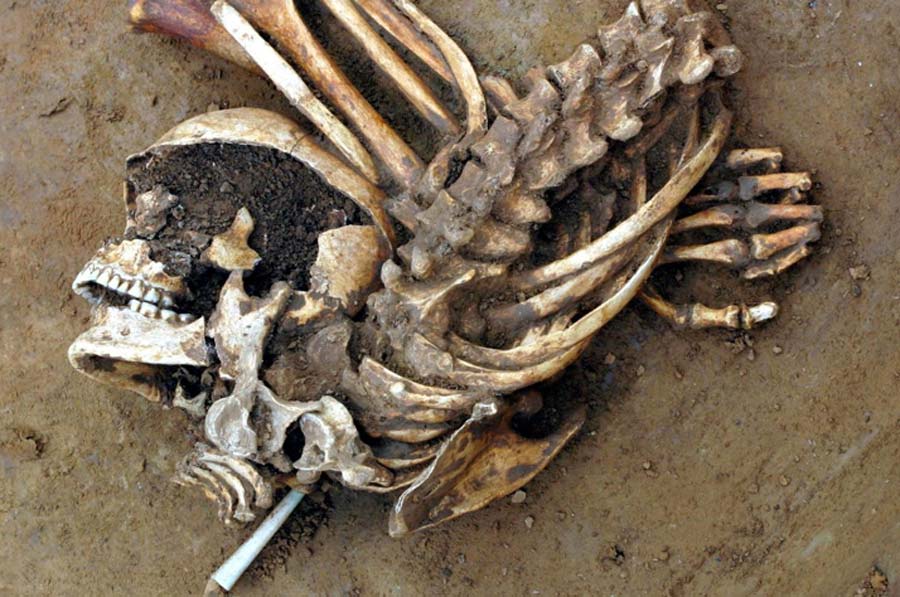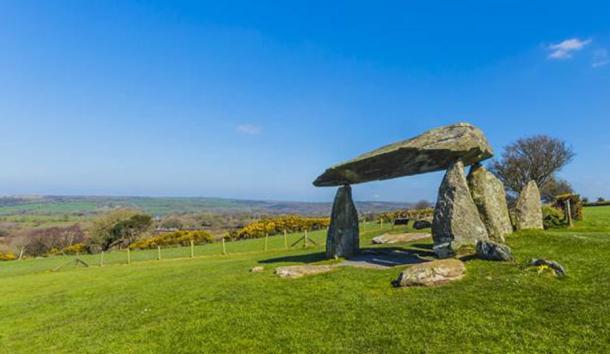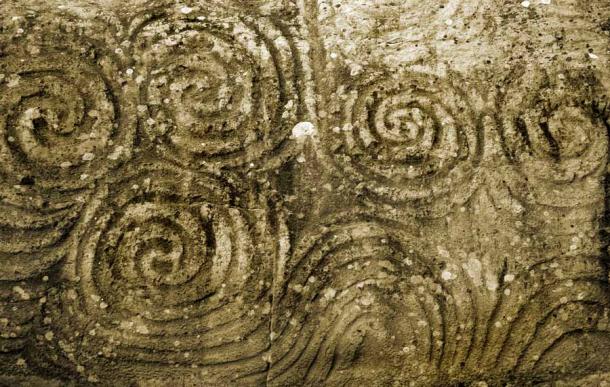

The Bronze Age in Britain lasted from circa 2500 BC to 700 BC. Prehistoric Britain in this period was marked by complex tool making using copper and bronze. Britain’s Bronze Age was also characterized by the widespread adoption of agriculture in Britain. A new study, published in Nature, discusses a previously unrecognized, large-scale migration wave from eastern France, especially, into Britain during the Middle (1500-1000 BC) to Late Bronze Age (1000-700 BC). The study claims this third migration wave likely facilitated the spread of early Celtic languages across prehistoric Britain.
The study also highlights differences in the frequency of an allele (a variant gene type) associated with lactose tolerance, suggesting a difference in the usage of Bronze Age dairy products between Britain and Central Europe at the time of the 3rd wave of migration into Britain.

The Pentre Ifan Neolithic Burial Chamber, West Wales, UK, which connects to the changes experienced in prehistoric Britain as Early European Farmers changed the landscape. (Tony Martin Long / Adobe Stock)
Prehistoric Britain and Early European Farmers
In the realm of archaeogenetics, the term Early European Farmers (EEF) is a distinct genetic component, tracing lineage and ancestry from the early Neolithic farmers of Europe. The latest Nature study, interestingly, points to the fact that present-day people from England and Wales harbor more ancestry from the EEF group, rather than from the Early Bronze Age people, based on genome sequencing carried out on 793 individuals.
This genome sequencing revealed that the first Neolithic farmers of the island of Great Britain, who lived between 3950-2450 BC, derived a whopping 80% of their ancestry from Early European Farmers, whose origins went back to Anatolia (ancient Turkey) over 2,000 years ago! The remaining 20% was from Mesolithic hunter-gatherers from Western Europe.
There were two large-scale population migrations in Britain in the past 10,000 years. The first occurred at the 3950 BC mark. The second migration occurred around 2450 BC, and was associated with the arrival of continental Europeans, who brought steppe ancestry from the pastoral communities on the Pontic-Caspian steppe, in the region between the Black Sea and the Caspian Sea. The second migration wave into prehistoric Britain resulted in the replacement of 90% of the existing population, causing the steppe ancestry proportions of England and Scotland to become indistinguishable from the peoples of western mainland Europe.

Celtic spirals at New Grange, County Meath, Ireland tell the story of Bronze Age Britain changing with the Celts from eastern France. (Tetastock / Adobe Stock)
Celtic Influences Came With the3rd Migration Into Britain
The period from 1500-1100 BC is recognized as a time when the cultural connections between Britain and the rest of continental Europe intensified, and this is evidenced in the shared similarities noticed in domestic pottery, metalwork, and ritual practices. These similarities are not evidenced in archaeological depositions up to 750 BC, which corroborates the genetic findings that also do not indicate much demographic-altering migration by this point in time.
Crucially, the study alludes to a third wave of population migration that occurred across the English Channel, from eastern France. The study also shows that western and central France are poorly represented in the gene pool of the individuals sequenced. The third migration from eastern France into prehistoric Britain led to interactions between the existing locals and migrants, which acted as a vector of cultural change in England and Wales. One of the consequences was the evidence for early Celtic languages spreading into Britain from France at the end of the Bronze Age, and at the beginning of the early Iron Age.
In the study, they argue, in poetically scientific terms, that:
“Population movements are often a significant driver of cultural change, including in the languages people speak. While periods of intense migration such as the one we infer here do not always result in language shifts, genetic evidence of significant migration is important because it documents demographic processes that are plausible conduits for language spread.”
Indeed, moving forward, much more aDNA (ancient DNA) and other genome-sequencing data must be collected from western and central France, and even Ireland, to test alternative scenarios of population history consistent with the observations that were put forward in this study.
There is also a great need to understand and develop theories of genetic makeup that are consistent with pre-existing archaeological frameworks.